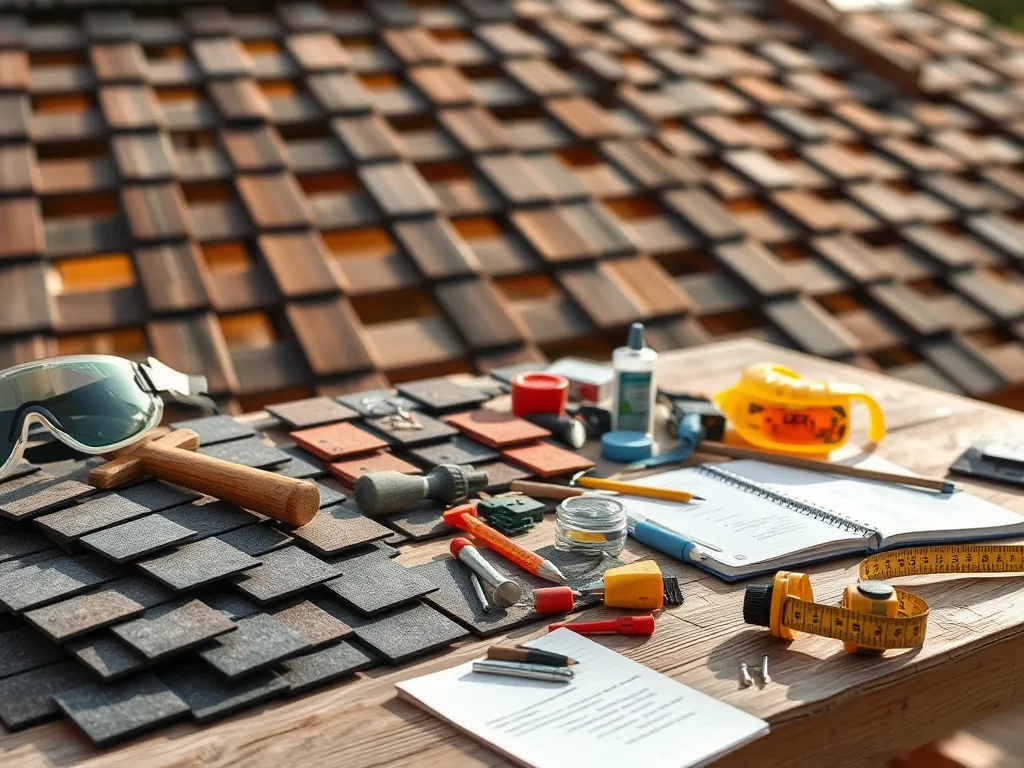Essential Guide to Roof Repair: Tips and Insights

Ultimate Guide to Roof Repair
Roof Repair is an essential aspect of home maintenance that ensures the integrity and longevity of your home. Whether it's resolving minor leaks or addressing significant structural issues, timely roof repair can save homeowners from more extensive damages and costly replacements down the line. Learning how to perform basic repairs yourself or recognizing when to call in professionals is vital for every homeowner.
The roof serves as the first line of defense against the elements, making Roof Repair a crucial concern for maintaining a safe and comfortable living environment. Neglecting roof issues can lead to significant problems, including water damage, mold growth, and decreased energy efficiency. Regular attention to roof maintenance can minimize the need for repairs and extend the life of your roofing materials.
When considering upgrades, roof replacements not only improve safety but also boost your property's market value.
Homeowners should also be aware of the common causes of roof damage, such as severe weather, aging materials, and lack of proper maintenance. Engaging in proactive measures to address these concerns can significantly reduce the likelihood of requiring extensive Roof Repair. Whether you opt for DIY solutions or professional help, addressing issues promptly is key to safeguarding your home.
In this article, we will cover essential aspects of Roof Repair, including common issues that arise, DIY techniques, tips for hiring professionals, preventive maintenance tips, and cost considerations to help you budget for any necessary repairs. A well-informed homeowner is more empowered to make the right decisions regarding their roof and its maintenance.
Overall, understanding Roof Repair is critical to extending the lifespan of your roof and enhancing your home's value. Let’s dive deeper into the various facets of roof maintenance and repairs.
Common Roof Repair Issues
Leaks and water damage are perhaps the most prevalent issues in need of Roof Repair. These problems can stem from various sources, including damaged shingles, worn flashing, or even improper installation. Water infiltration can result in significant structural damage if left unchecked, leading to costly repairs and potential health hazards due to mold growth.
Investing in a new roof can significantly enhance your home's energy efficiency and aesthetic appeal.
Shingle replacement and repair is another common concern for homeowners. Weather conditions, especially strong winds, can lift or damage shingles, making them prone to leaks. Regular inspections will help homeowners identify and replace damaged shingles promptly to prevent water damage and maintain aesthetic appeal.
Flashing issues often arise around chimneys, vents, and skylights. Flashing is the metal material that directs water away from critical areas on the roof. If this flashing becomes damaged or improperly installed, it can lead to leaks. Roof Repair of flashing issues is essential to ensure a watertight seal in your roofing system.
Punctures and holes in roofing materials, often caused by falling branches or improper foot traffic, are other common things that require immediate attention. These vulnerabilities not only lead to leaks but can also compromise the entire roofing system's integrity. Prompt Roof Repair is necessary to patch these holes effectively.
DIY Roof Repair Techniques
Identifying roof problems is the first step in any DIY Roof Repair effort. Homeowners should regularly inspect their roofs for visible signs of damage, such as missing or curled shingles, rusted flashing, or pools of water after heavy rain. Learning to spot these issues can prevent minor problems from becoming major repairs.
Having the right tools is crucial for effective DIY Roof Repair. Basic tools such as a ladder, roofing nails, a hammer, roofing sealant, and a utility knife are essential for performing most repairs. Always ensure that your tools are in good condition and suitable for the task at hand.
Safety precautions are paramount when engaging in Roof Repair. Always utilize a sturdy ladder, wear appropriate footwear, and consider using a safety harness when working on steeper roofs. It's wiser to work on roofs during dry conditions and to have a buddy system in place to ensure safety when performing repairs.
A step-by-step guide to patching leaks involves first locating the leak, cleaning the surrounding area, applying roofing tape or sealant, and reinforcing with additional roofing material as necessary. Following these steps carefully can lead to a successful DIY Roof Repair and increase the lifespan of your roof.
Hiring Professional Roof Repair Services
When considering hiring professional Roof Repair services, it's crucial to ask the right questions. Inquire about their experience, credentials, and previous client reviews to gauge their capability. Asking about their warranty policies can also provide peace of mind regarding the quality of their workmanship.
Understanding repair estimates is vital when hiring professionals. A detailed estimate should include a breakdown of costs, the scope of work to be performed, and timelines. Be wary of estimates that seem too low, as they may indicate corners being cut in the repair process.
Evaluating contractor qualifications involves checking licenses, insurance, and bonding to ensure that you are hiring skilled professionals. Insurance coverage protects both you and the contractor in case of accidents during the repair process, making it a necessary consideration.
Lastly, the importance of warranties in roofing cannot be overstated. A reliable contractor should offer warranties on both the materials used and their workmanship. This assurance can provide peace of mind and may save you from future repair costs if issues arise post-repair.
Preventive Maintenance for Roofs
Regular inspections and maintenance tips are crucial for preventing costly Roof Repair. Homeowners should consider scheduling inspections at least twice a year—preferably in the spring and fall—and after any severe weather events. Look for signs of wear, and don’t hesitate to address minor issues immediately to ward off larger problems later.
Cleaning gutters and downspouts is another important preventive maintenance task. Clogged gutters can lead to water backup and damage to both the roof and the home’s foundation. Regularly clearing debris will facilitate proper drainage and protect the roofing system.
Identifying signs of wear and tear can help homeowners intervene early. Look out for discoloration, sagging areas, or excessive granule loss in shingles. Early detection is key to minimizing the impact of roof damage and reducing the extent of repairs needed.
Lastly, understanding the effects of weather on roofing is essential for maintaining your roof. Harsh sunlight can degrade materials, while snow and ice accumulation can create excess weight and promote leaks. Regular maintenance tailored to your region's climate can enhance roof longevity.
Costs and Budgeting for Roof Repair
Average costs for common repairs can vary significantly based on materials and labor. Simple repairs, such as shingles replacement, may cost between $100 to $300 depending on the roof’s size and complexity. Meanwhile, extensive repairs involving multiple issues can go upwards of several thousand dollars.
Understanding material costs is critical when planning for Roof Repair. Different materials offer varying levels of durability and price, such as asphalt shingles being more affordable compared to metal or tile options. Knowing your budget and material choices can dictate repair options.
Insurance coverage for roofing repairs can also help defray costs. Homeowners should review their policies to understand what is covered, especially when dealing with weather-related damage. It’s wise to document damage thoroughly to assist claims processes.
Finally, budgeting for emergency repairs is wise since roofing issues can occur unexpectedly. Setting aside a contingency fund for unforeseen roof problems can ensure that homeowners are prepared for repairs without significant financial strain.
